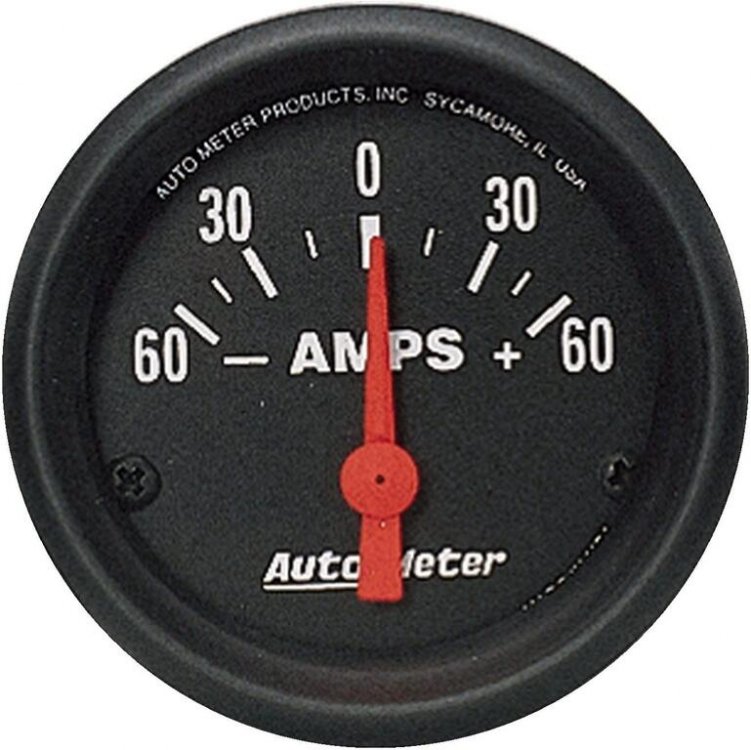-
Posts
6,862 -
Joined
-
Last visited
-
Days Won
167
Content Type
Profiles
Forums
Gallery
Events
Store
Everything posted by saddlebum
-
Looks to me Puc like you the one thats gonna be doin the dishes. Does she make you wear a frilly apron when your doing them.:canada:
-

Erratic Voltage
saddlebum replied to jdross440's topic in Venture and Venture Royale Tech Talk ('83 - '93)
Not quite true. If there is a bad sense wire connection between the battery and the regulator, the regulator may sense a low voltage condition when there is none and in turn cause the battery to be overcharged. Check your wire connections before condemning the regulator/rectifier. If the wiring all checks out then I would agree that the reg/rec is at fault. -
I am inclined to agree with Marcarl in that it sounds like gear rattle. One common cause is engine idle speed too low should be between 950 and 1050.
-

Too much charging from the stator?? Or rectifier??
saddlebum replied to Dav's topic in Watering Hole
Not sure why you would want to bother, since as long as your voltmeter stays above 12.5 with everything on the bike turned on your charging system and battery are keeping up. If not then you either have a weak charging system and/or battery or your just running too many accessories, but since you do. There are various types of ammeters, the simplest set up is a direct ammeter. It will indicate "0" in the middle of the scale and the numbers increase in either direction. one direction indicating amount of acc. draw or discharge the other direction indicating amount of battery draw or charging. They come in various load sizes for example 50-0-50 or 100-0-100. Disconnect all wires from your positive post. now connect only the heavy wire from your starter solenoid and a wire from one post of the ammeter to the positive post (10 ga recommended). Now all the remaining wires will connect to the other post of the ammeter. The needle will read to one side or the the other side of zero depending on currant flow. If the battery is charging the needle will go in one direction indicating the amps drawn by the battery while recharging. The lower the state of the battery the more it will draw and the higher the reading. as it reaches full charge the ammeter will move closer to zero. How high the ammeter reads is also affected by the number of acc. you turn on but as long as the needle stays to the one side of the zero your battery is charging and keeping up with the load demand. If the needle goes to the other side of the zero your acc. are drawing more than your battery can manage and you are now reading the amount the battery is discharging. If you turn acc. on with the bike not running you will a larger discharge than if the bike is running. Fire the bike up and the indicated amount of amps discharging will go down the needle moving closer to zero. ideally you want the needle to move to the opposite side of zero once the bike is running indicating the battery and charging system is keeping up with demand. If not you either have too many acc. drawing power or the battery and charging system is weak and cannot keep up with the demand. In this setup starter draw does not come into play since it will draw more than the ammeter is designed for and this is why the solenoid heavy wire is connected directly to the battery. You could get a higher reading ammeter but then you would give up a level of sensitivity. Ideally you want an ammeter with a scale high enough to handle most of the currant used by the bike including max battery draw while charging but not including the starter draw and low enough to be as sensitive as possible to minor fluctuations. Now from the above basic set up you can get more sophisticated ones that use induction pickups and even very accurate digital ones that will read put both volts and amps. Picture is of basic gauge the amazon link is an example of a digital one. https://www.amazon.ca/Battery-Monitor-Voltmeter-Ammeter-Transformer/dp/B07D35MFBQ/ref=asc_df_B07D35MFBQ/?tag=googleshopc0c-20&linkCode=df0&hvadid=292965357502&hvpos=&hvnetw=g&hvrand=2946946082963120748&hvpone=&hvptwo=&hvqmt=&hvdev=c&hvdvcmdl=&hvlocint=&hvlocphy=9000858&hvtargid=pla-552976227978&psc=1 -
-
According to these article,s it is apparently true though I actually thought we cut all ties. https://www.history.com/news/canada-independence-from-britain-france-war-of-1812 https://www.international.gc.ca/world-monde/international_relations-relations_internationales/multilateral-multilateraux/commonwealth.aspx?lang=eng
-

Too much charging from the stator?? Or rectifier??
saddlebum replied to Dav's topic in Watering Hole
and the harder you shake to get more pennies out at one time the higher the amperage and the faster the piggy bank empties. Sooo Patch, how much amperage did it take to empty your little brother's piggy bank eh? I figure there had to be a reason you chose that analogy seeing as one tends to choose what comparison one understands best -
I found the elite 2 i had on my bike was bad for tracking road snakes but I have not had the issue with the E3's. On the other hand the E4's have on a rare occasion grabbed a road snake but the asphalt was extremely hot on those few odd occasions.
-
Well @cowpuc I am inclined to believe that due to covid and resulting lack of meet and eats and rallies the cat just decided that going from a practice audience to being the main audience for Marcarl's speechifying was just more than it could handle and is currently hiding under some neighbors porch. BTW just for the record I have no issue with the dues. What we get out of the site is worth it in my book and if it helps to safeguard our web site from annoying pests, even better. Now back to the vote ----I vote NAY----as it would be unfair to the CAT
-
Boy have you got that right and not just the strength that goes bye bye. About two weeks ago I did a four day canoe trip. Portaging with a 50lb pack was not bad, once you got your legs to go straight from being cramped up in a canoe for 2-3 hours. Got to the point were I thought maybe I could convince my son to portage the canoe with me in it so I could avoid the painful agony of slowly unfolding my legs as I got out.
-
Annnnnnd if you come to the events You can pull up a chair (and trust me you will need a chair) to listen to @Marcarl do his speechifying.
-

Too much charging from the stator?? Or rectifier??
saddlebum replied to Dav's topic in Watering Hole
When working with apprentices I often use plumbing instead getting too high tech when trying to get them to understand circuits. Works extremely well. -
I bumped into Sunman on the road some years ago about the time Don started asking for membership fees. It was at a Tim Horton's. I saw this guy riding a Venture and struck up a conversation with him were at some point I asked him if he was aware of venturerider.org. Boy you would think I kicked a hornets nest. He told me he had, was a member and who he was on the site but quit and proceeded to give me the whole rant about why and his beef about the $12 membership fee. The same rant Puc just posted in post #8 . Needles to say I could not get out of there and back on the road fast enough. I am surprised after all this time that this pot is still boiling.
-
As you well know the membership has come to be about more than just the bikes. Its about the people and friendships formed through the bikes and there are many here who can no longer ride but stayed on because they have become friends and family (and maybe a little addicted to being associated with a bunch of nuts). A lot of those members still even attend some of the rallies or M&E's even thought it may mean caging it to get there. Nice to see you you back again.
-

Too much charging from the stator?? Or rectifier??
saddlebum replied to Dav's topic in Watering Hole
Here is simple explanation without getting too technical. A volt meter and ammeter or amp meter work differently. voltmeter indicates the state of charge while an ammeter indicates the load placed on the electrical system. Take a very low battery for example. as it begins to charge voltage will be low increasing as it reaches full charge. On the other hand the ammeter will read high and drop off as the battery reaches full charge. Turn on additional accessories and the voltmeter will go down while the ammeter will go up. in simple terms the ammeter indicates the demand placed on the electrical system while the voltmeter indicates the available power to meet that demand. -

Too much charging from the stator?? Or rectifier??
saddlebum replied to Dav's topic in Watering Hole
13.6 to 14.2 is normal charging range for most vehicles. Start getting into the 15+ range, more so above 16 volts, though it will not harm any electrical devices on the bike for the most part, you will, start boiling your battery dry. The higher the overcharge the faster you boil your Battery. On that note Before jumping to conclusions as earlier stated check voltage at the battery with a known accurate voltmeter. You should not overcharge with everything turned off but also you should not under charge with everything turned on. Also when checking charging voltage, Don't take reading right after starting the bike. The battery needs to build up full charge before you can get an accurate reading. Right after starting the bike you should see the voltage gradually climb as it charges the battery. Eventually holding steady when it reaches its max. charging voltage. Also a Regulator controls the ALt charging voltage based on the voltage it senses at or from the battery. If there are dirty or poor connections between the battery and regulator, the regulator will will sense a low voltage condition causing the Alternator to overcharge. -
Also Guilty, have developed a bad habit at times of stopping and balancing the bike rather than putting my feet down. Last ride as I started to pull out and had to suddenly stop again, I almost did the same thing, pretty sure if there was loose gravel under the front wheel I would have dropped it. A nice feeling to know that you can balance the bike, at a dead stop, for a few seconds but ultimately much safer to do a proper stop, plant your feet and check traffic properly. Specially in back country roads, with dips and blind bends, were cars almost always go well over the speed limits, which is were I was at the time.
-
Great Pics. Thanks to those of you that posted them even though you total accomplished making me and sad that I had to miss you all this year.
-
107C ! Assuming the C is for celcius, That's no garage, that's an oven. The water would be evaporating out of the batteries. My bike sits outside all year even in winter and the battery stays in the bike.
-
I have run through two sets of E3's and they got dangerously hard before They wore out probably why they got unrealistically high millage, I think the rubber got so hard they just quit wearing down. I have been Running E4's for the past two years and I do like them but they are not cheap to buy. Have you ever run the Shinko SR777? I have been looking at them and the Shinko tour master 230.
-
In A nut shell, What shinko's have you run and which did you prefer and why. Also what was your overall opinion of the E4 performance wise compared to other tires you have run.
-
A few things, that I always try to make people aware and take into consideration of regarding tires, regardless of the vehicle are: 1) long lasting tires do not always have the best traction. The high millage is often due to harder rubber which often results in poor traction particularly on wet roads. 2) Tires with better traction often have softer rubber which often results in faster tire wear. 3) When trying to decide which tire gives you the better bang for your buck millage or price alone are not the best indicators. You need to calculate it out to cost per mile or KM. plus take wet road traction into consideration. 4) Just because a tire still has lots of tread left on it does not necessarily mean a tire is still good. I had a set of E3's with extremely high mileage almost double the norm with plenty of tread left on them but had to replace them because the rubber had gotten so hard that my back wheel was sliding out in the corners and on one trip coming back from a WNY rally the whole bike slid sideways on a ramp. At first I thought I hit an oil slick but as time went on the issue got worse. 5) Be wary of the Avon Venoms on the 1st gens. They seem to work fine for the 2nd gens but a few of us (myself included) with 1st gens have found them to cause the back end of the bike to wag like a dogs tail once you get close to 100KM/Hr or 60MPH. I was fortunate enough that the dealer I got the tires from replaced them with another brand of tire.
-
That's odd, I installed a Deka ETX glass mat in my bike 6 years ago and it is still going strong. Even after forgetting to connect the battery saver to the bike the last two winters and which allowed the battery to go low enough where it barely cranked the engine over.



